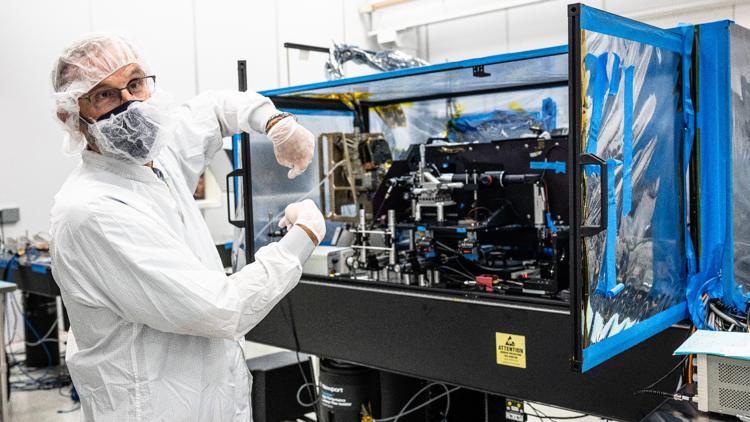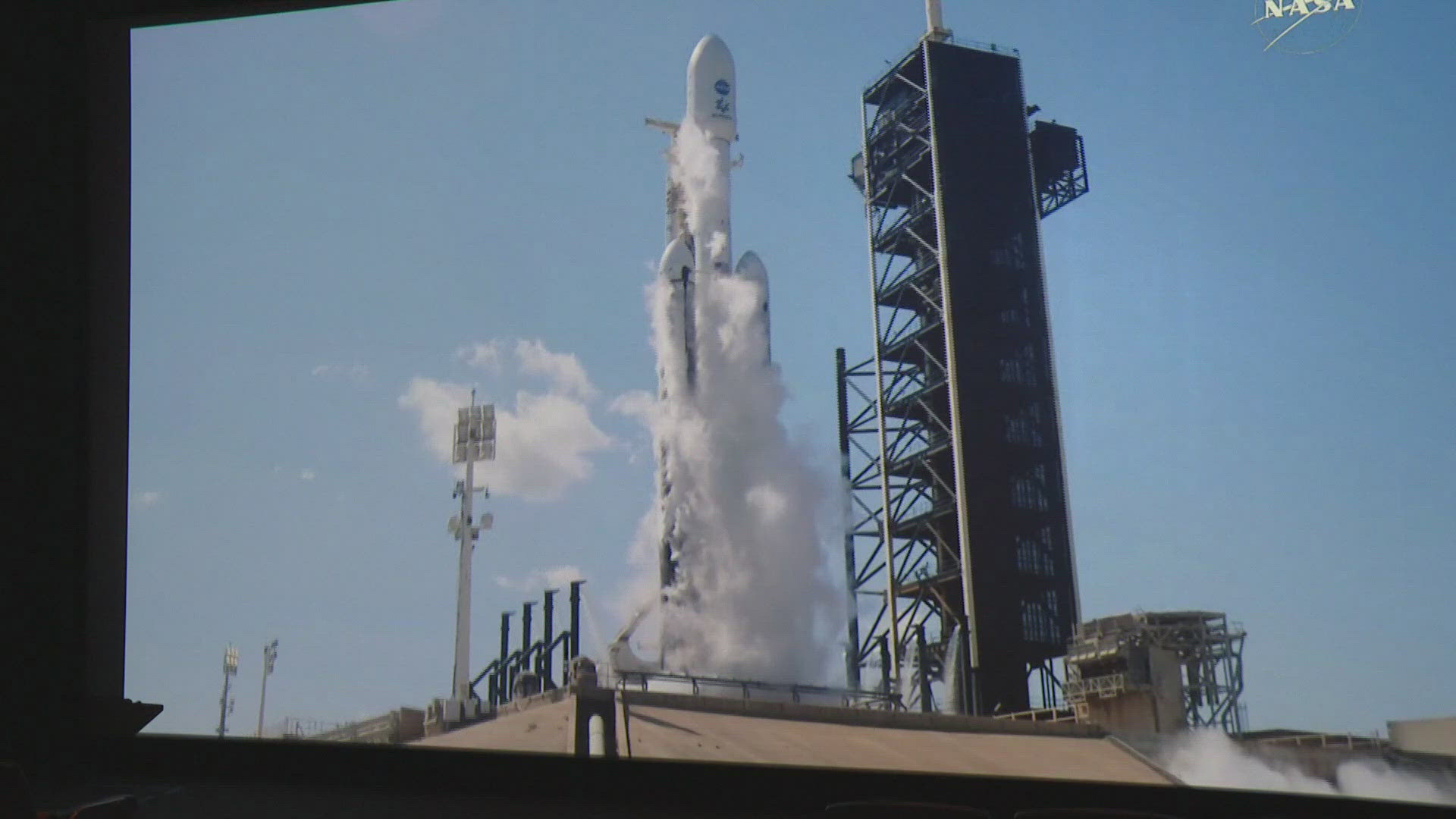TEMPE, Ariz. — NASA's latest mission launched Monday morning, sending a robotic spacecraft to investigate one of Jupiter's moons.
Scientists at Arizona State University (ASU) celebrated lift off just after 9 a.m., knowing an integral instrument in this mission was built at home.
“It is a robotic NASA planetary mission and it is going to go to Europa, which is one of the four planet-sized moons of Jupiter," ASU Research Professor David Williams said.
Williams said scientists already know Europa is a moon covered in icy crust with what appears to be salty liquid underneath its surface, but they want to know more.
“We’re sending a new mission there which will be able to completely characterize the body, get lots of good modern data with a whole suite of instruments to understand the inhabitability," Williams said. "Could this moon actually be an abode for life?"
One of the instruments on board is the Europa Thermal Emission Imaging System (E-THEMIS) built by ASU Regents Professor Philip Christensen.
The E-THEMIS is an infrared camera that will measure the surface temperature of Jupiter's moon.
“If there any locations near the surface of Europa that are admitting thermal radiation, this instrument will detect it," Williams said.
Williams said the information E-THEMIS brings back will answer decade-old questions and open the door for future missions to Europa.
“What is the depth of the liquid water ocean? What is the thickness of the icy crust? What compositions and materials are being ejected possibly from the surface of Europa," Williams said. "It will basically enable us to determine where would be the sweet spot for the next mission, a lander to go, because you need to know the one great location where you want to send a lander before you can send one there."
It will take some time to answer those questions.
“It’s going to do sort of a tour through the solar system, doing several flybys for momentum boost to get it out to Jupiter, Williams said.
The spacecraft is expected to reach Jupiter in 2030.



